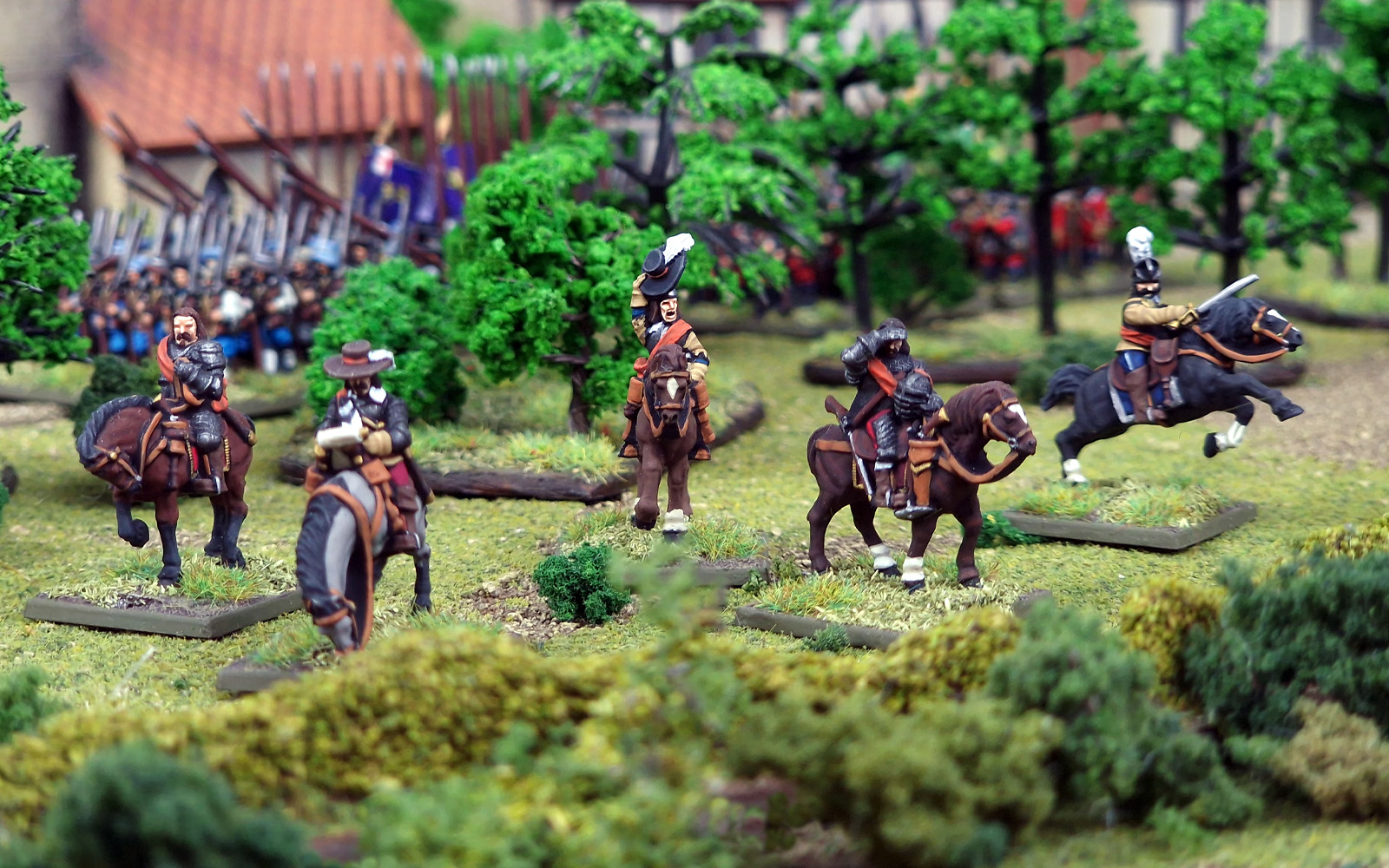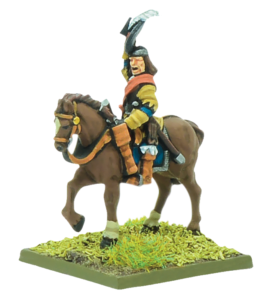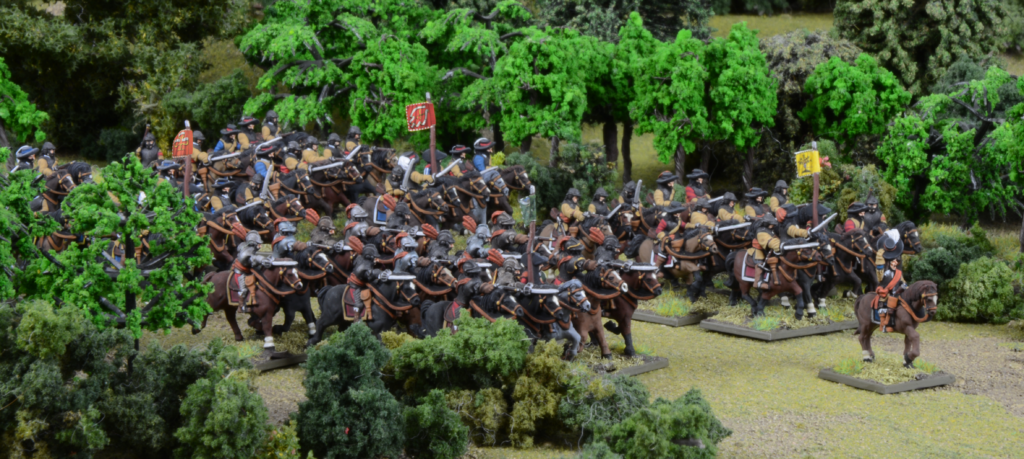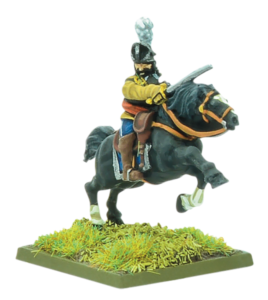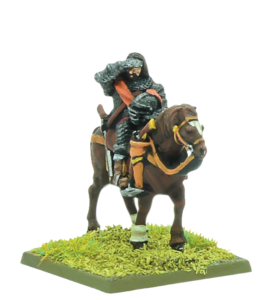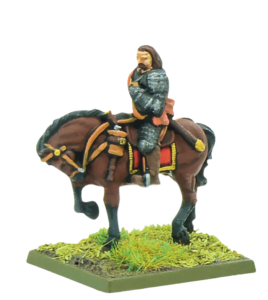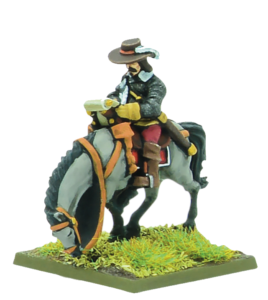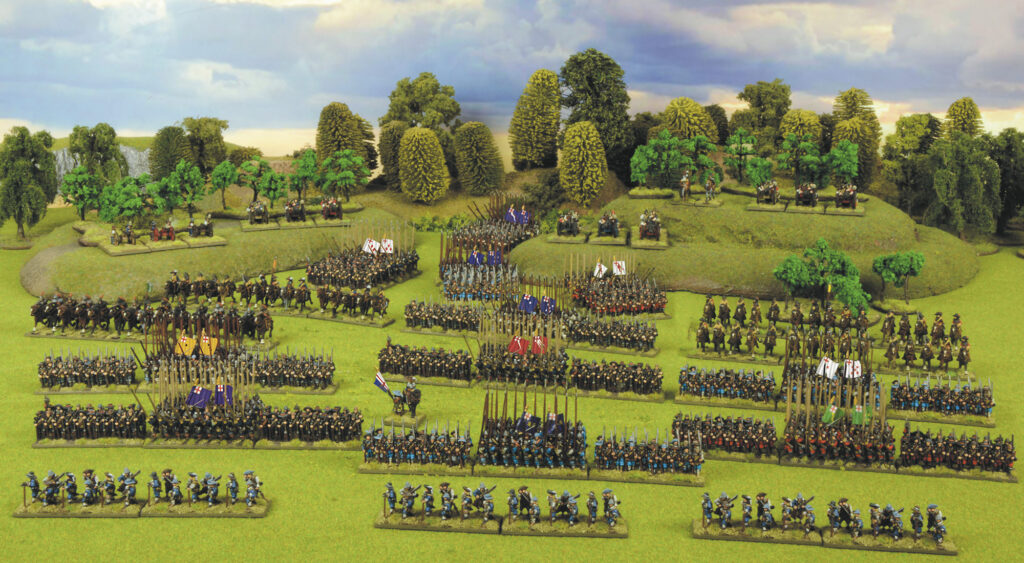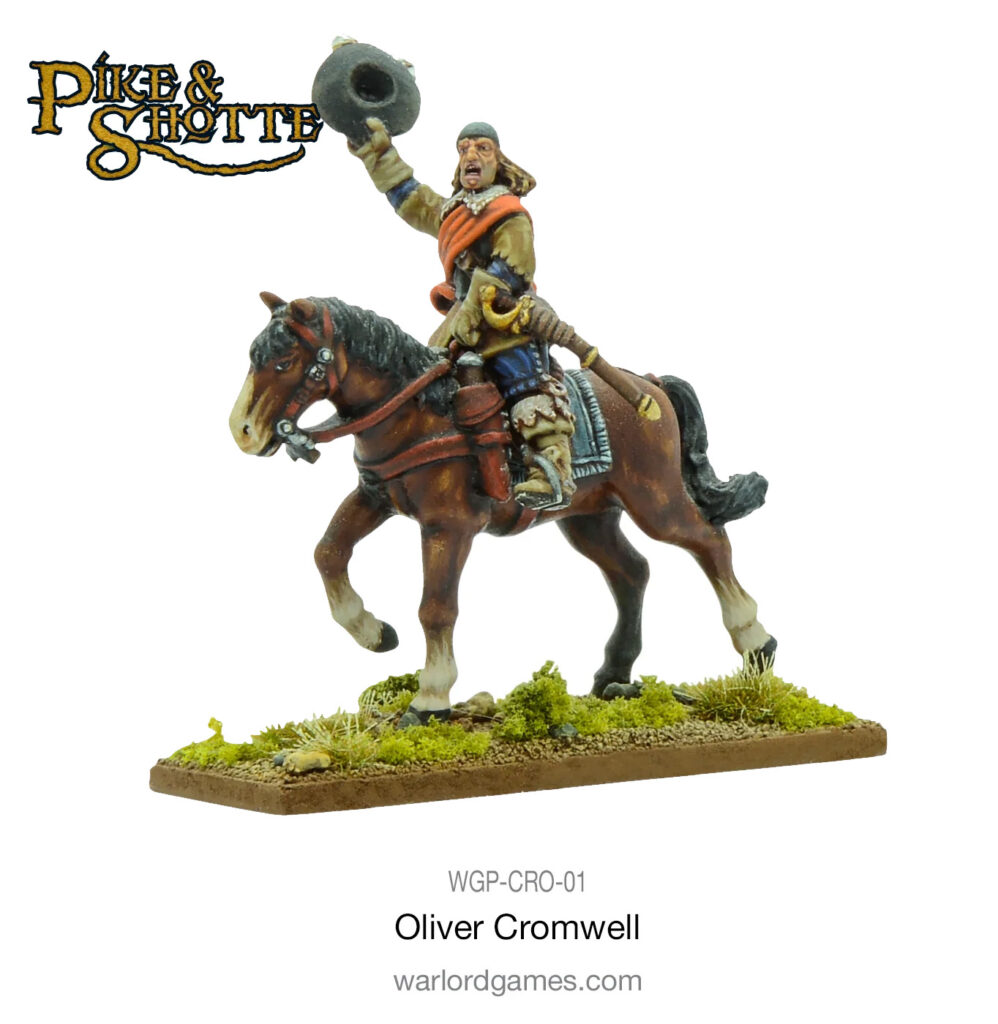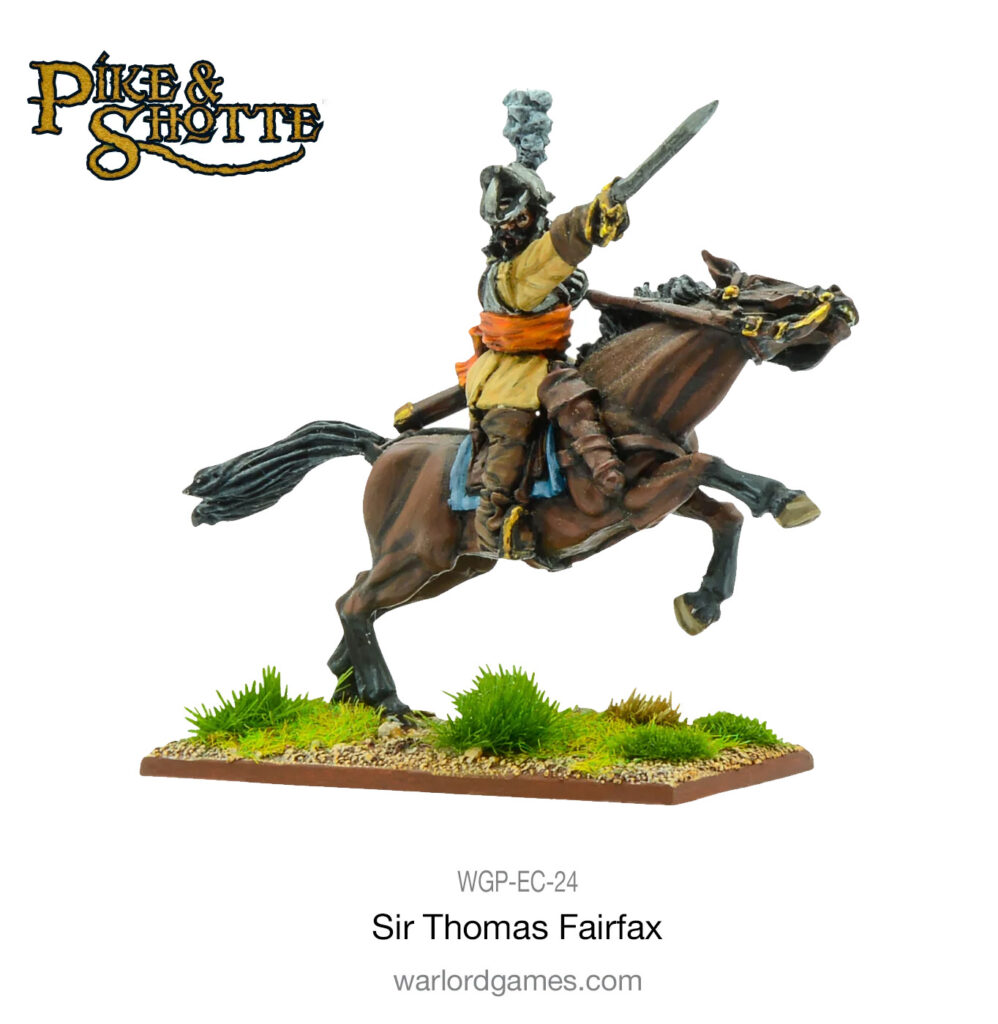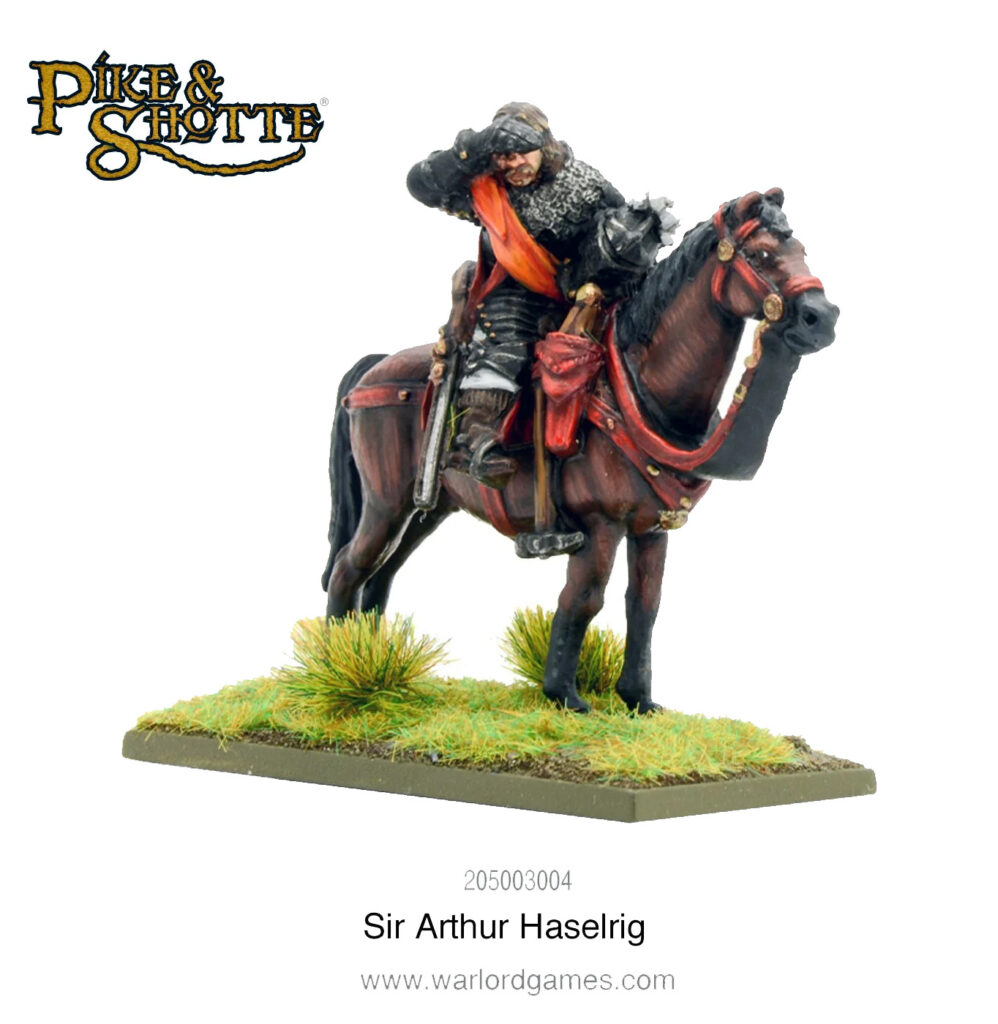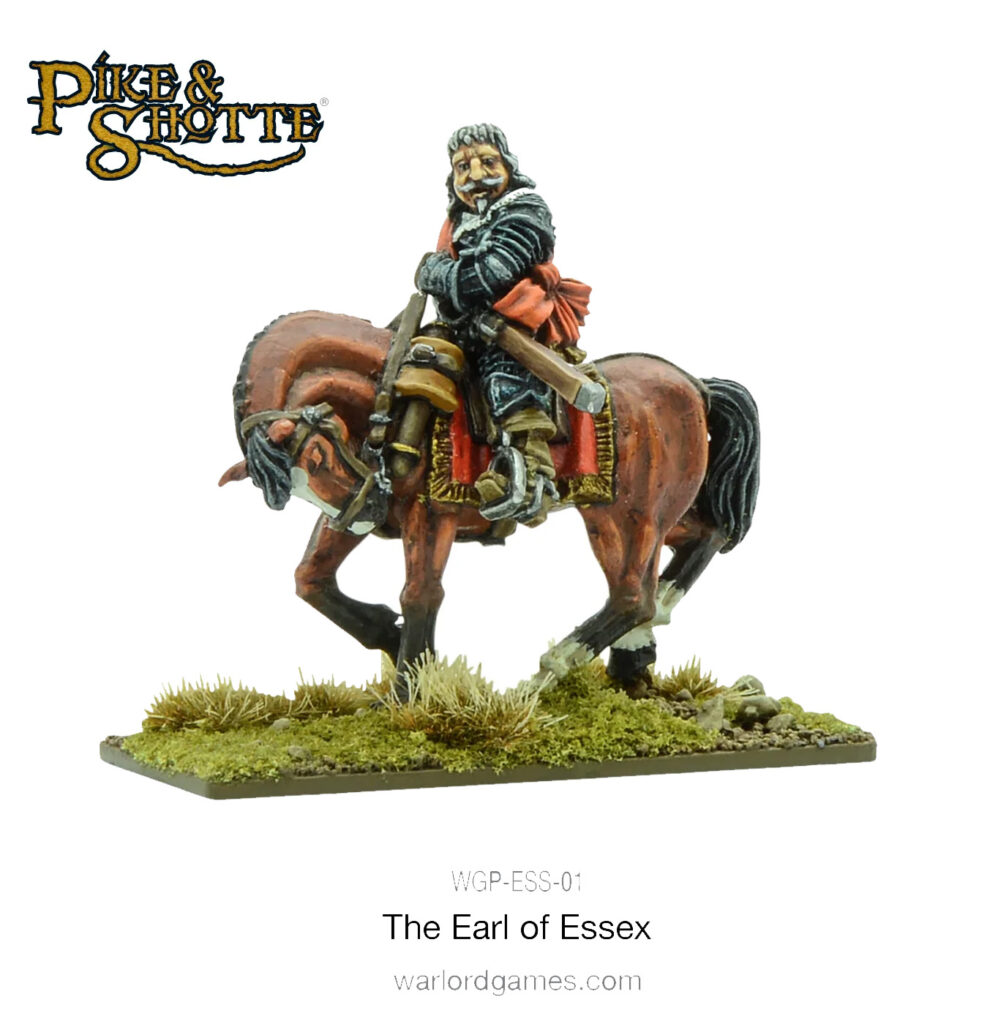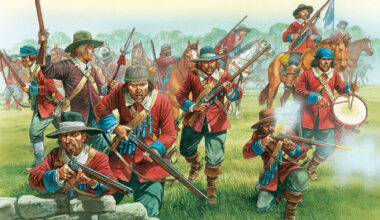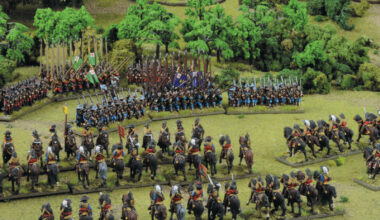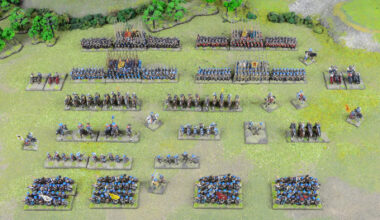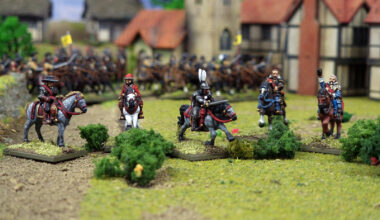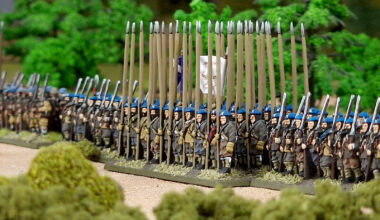Recently we took a look at the senior leaders of the Royalist cause in the English Civil Wars. Today, we’re examining their counterparts, the Parliamentarian commanders. These men took up arms against the Crown, and their victory would see a brief period in which England was (at least in theory) a republic. Busy chaps, these!
Oliver Cromwell
We’ll start at the top with Oliver Cromwell himself – one of the most divisive figures in British political history. Originally the Member of Parliament for Cambridge and a somewhat obscure figure, Cromwell originally recruited a troop of cavalry when the Civil Wars broke out. This was later expanded to a regiment, which saw good service in the early years of the conflict. By Marston Moor in the summer of 1644 he was a lieutenant general of Horse under the Earl of Manchester, proving himself to be an excellent commander of cavalry. This was due in part to his desire to have “godly, honest men” as his captains, Cromwell being a man of staunch Puritan faith. He also contributed greatly to what became known as the New Model Army despite a complete lack of any formal military training. Recognising the exceptional value of cavalry as an offensive arm, he is credited with having introduced the concept of ‘close order’ cavalry to England – riders charging literally knee-to-knee into the enemy – and despite his lack of experience, he was a significant force of personality, always a good thing to have in a leader!
At Naseby, his forces were instrumental in routing the Royalist horse and bringing an end to the First Civil War. In the Second Civil War he served equally ably, empowered by his religious fervour, handily beating a Scottish army at Preston, after which he reentered into politics with renewed vigour and significant celebrity, becoming the ‘Lord Protector’ of the new Commonwealth of England in 1649 after the execution of King Charles I. His subsequent conduct on campaign in Ireland was frankly barbaric, however, and significantly tarnished his legacy, but there is no doubting his ability to command troops in battle.
In Pike & Shotte Epic Battles, we rate him with a Command value of 9, and his Will of Iron special rule significantly boosts the combat capability of any unit he joins, making him the perfect choice to lead a desperate charge to victory!
Sir Thomas Fairfax
Next up is Sir Thomas Fairfax, the eventual Parliamentarian commander-in-chief (albeit frequently overshadowed by Cromwell both at the time and in later history). The son of the wonderfully-named Ferdinando Fairfax (who would be his commander for much of the early part of the wars) was a veteran of continental fighting, serving as his father’s Lieutenant General of Horse in the north. The duo saw significant action and plenty of success all across Yorkshire, culminating in the great Parliamentarian victory at Marston Moor, where Thomas’ brother Charles was killed, and Thomas himself was severely wounded. With the arrival of the Self-Denying Ordinance and the New Model Army, Fairfax became the new Lord Commander, and quickly proved his worth at Naseby and the subsequent engagements that put an end to the First Civil War. A far less comfortable politician than commander, he would nevertheless prove a crucial figure in the Restoration of Charles II to the Monarchy in 1660, which certainly helped ensure his life was spared post-war!
Beloved by his troops, on the Pike & Shotte Epic Battles tabletop Fairfax is an astute general with a Command of 9 and his Inspiring Leader rule is great for steadying a battered unit and convincing them to hold the line, come what may.
The Self-Denying Ordinance, passed by English Parliament on 3 April 1645, required all members of parliament who were also officers in the Parliamentary Army or Navy to resign either their command or their seat; “no member of either house shall have or execute any office or command”.
Sir Arthur Haselrig
Following Fairfax is Sir Arthur Haselrig, one of the five Members of Parliament whom Charles I unsuccessfully attempted to arrest in the buildup to the Civil Wars, and a staunch Puritan and Republican. Raising a troop of horse for the Earl of Essex he distinguished himself at Edgehill and as a commander under Sir William Waller in the west before his unit was more or less destroyed at Ripple Field. He would then go on to raise the famous ‘London Lobsters’, one of only two regiments of armoured cuirassiers in English service (and probably the last men to fight on English soil in full armour!), serving well at Lansdowne. At Roundaway Down his armour proved its value, as an eyewitness (admittedly a biased one as he was trying to kill Haselrig at the time!) reports shooting Haselrig in the head at close range to no apparent effect, while bullets bounced off his armour and sword-blows were roundly ignored. Success also followed at Cheriton where he commanded a cavalry wing, before he obeyed the Self-Denying Ordinance and retired his commission to remain in politics. While he did not take part in the trial and execution of Charles I, this did not save him from the vengeful Royalists upon the Restoration, and he died in the Tower of London in 1661.
With a Command of 8 he’s a perfectly competent choice to lead your Horse, and allows one unit of Cuirassiers to be upgraded to Brave for free to represent his famed Lobsters.
Earl of Essex
Robert Devereaux, 3rd Earl of Essex, was the scion of a proud family that could trace its lineage directly back to the Norman Conquest. Following an admittedly rather unspectacular military career on the Continent, Essex (whose relationship with Charles had been steadily deteriorating for some years) was made Commander in Chief of the Parliamentary forces at the start of the First Civil War. Although staunchly loyal to the Parliamentarian cause, Essex wished for peace between the King and Parliament, and he was not in favour of the war in which he found himself. At Edgehill, while unable to achieve a clear victory, he did win renown and respect by fighting in the front rank of his regiment, wielding a pike reportedly to good effect. In subsequent campaigning he struggled to achieve any spectacular success, although he was able to win a solid victory at the First Battle of Newbury in 1643. His downfall came at Lostwithiel in September 1644, where he was soundly beaten and his army forced to surrender (Essex himself having escaped in a fishing boat). He resigned his commission with many others to follow the Self-Denying Ordinance, before dying in 1646.
A solid, if unspectacular commander, we give Essex a Command of 8, and allow him to upgrade one unit of Cuirassiers to Elite for free to represent his Lifeguard.
Sir William Waller
Finally, we have Sir William Waller, another man with professional service on the Continent in his background. As a firm Parliamentarian, he captured Portsmouth and several other southern towns early in the wars, before being promoted to command of the Western Association army, fighting against his old friend Ralph Hopton. While achieving some success, he was stopped by Prince Maurice at Ripple Field, and then soundly thrashed at Roundaway Down where his army was destroyed. At Cheriton he firmly redeemed himself, winning what was considered the greatest Parliamentarian victory to date. Working with Essex, he then suffered a defeat at Cropredy Bridge, leading to his army disintegrating. Resigning his commission with the Self-Denying Ordinance, he considered returning to Continental service, before remaining in politics (where he opposed the growing military influence in government) before his death in 1668.
In Pike & Shotte Epic Battles we give him a Command of 8, and allow him to redeploy up to three of his units before battle begins, reflecting his experience moving troops rapidly around the country.
Commanders of the English Civil Wars
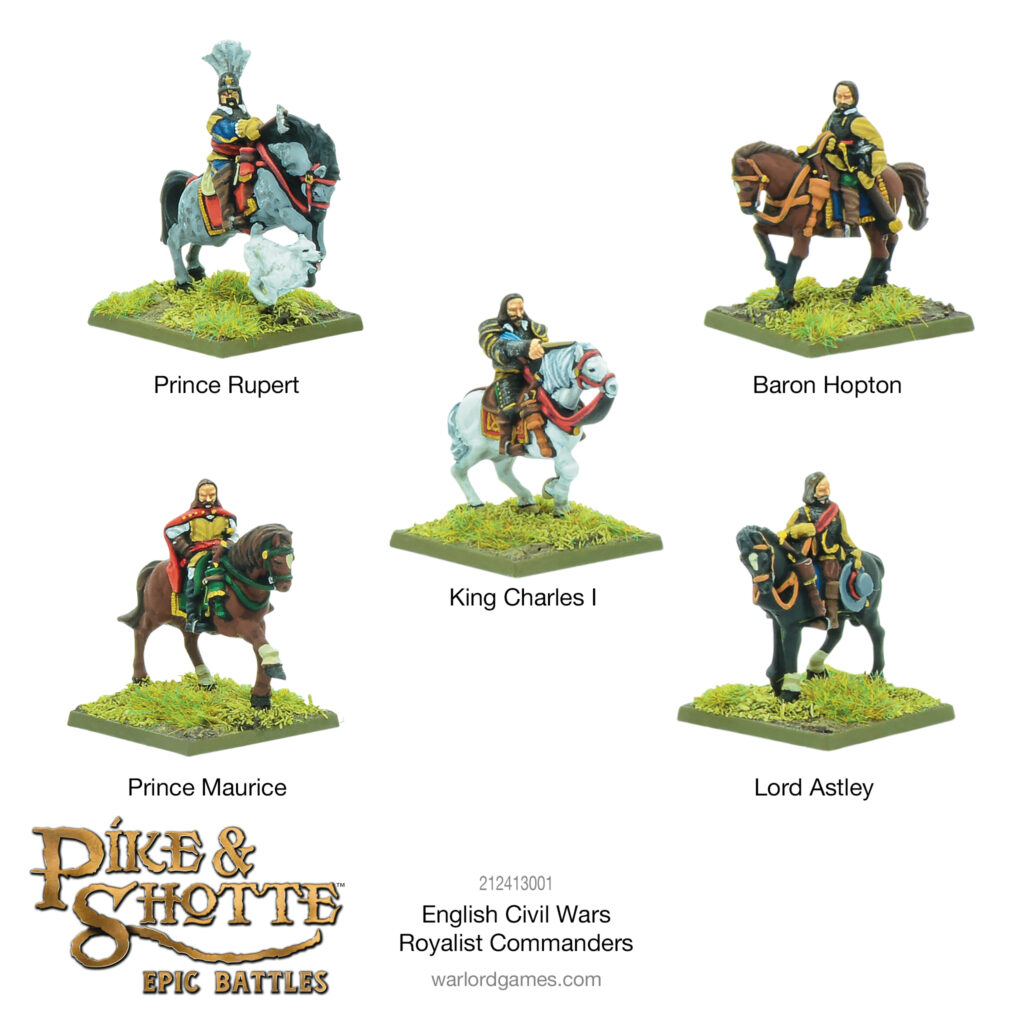
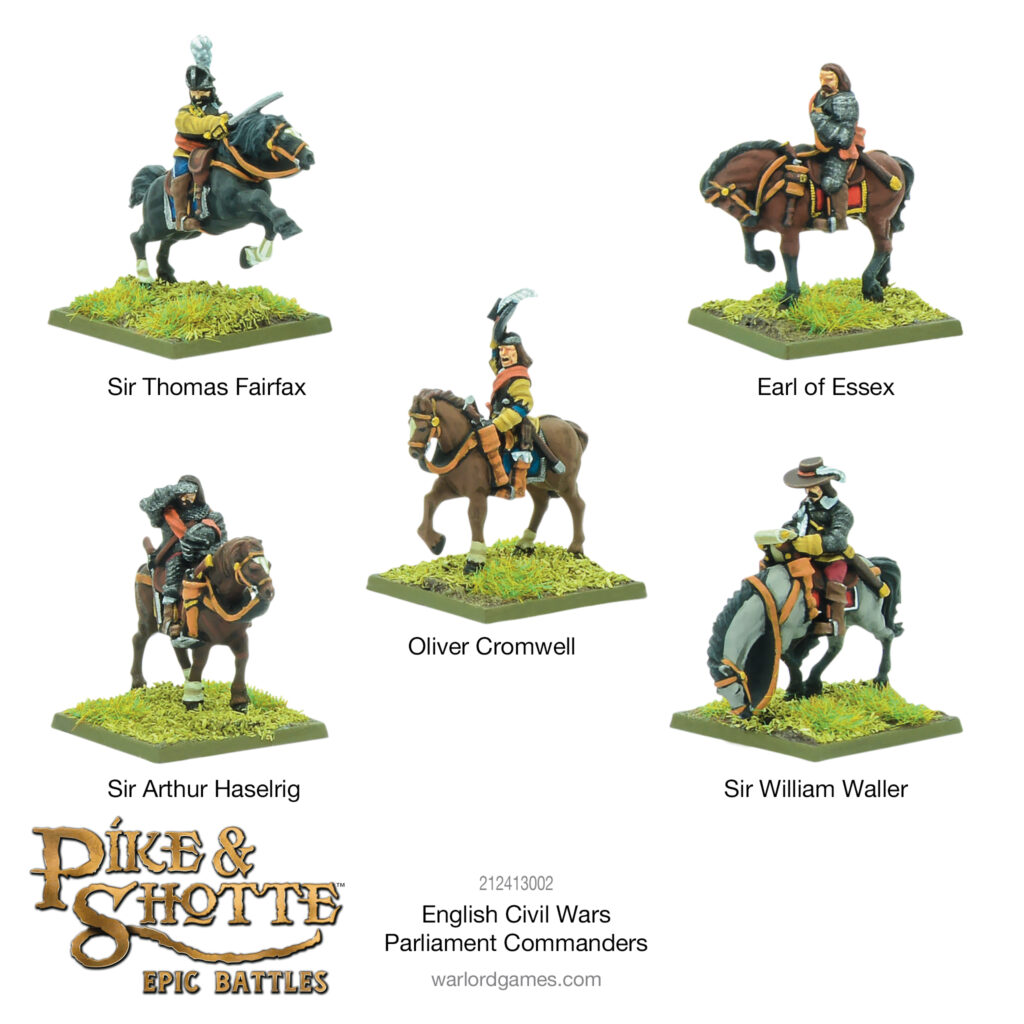
Pike & Shotte in 28mm!
Some of these Parliamentarian commanders are also available to lead 28mm Pike & Shotte English Civil Armies!
